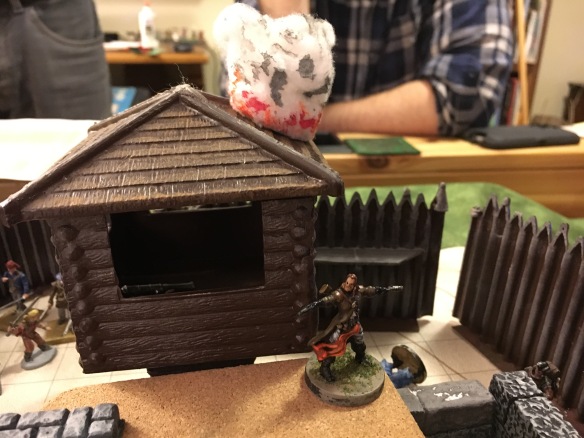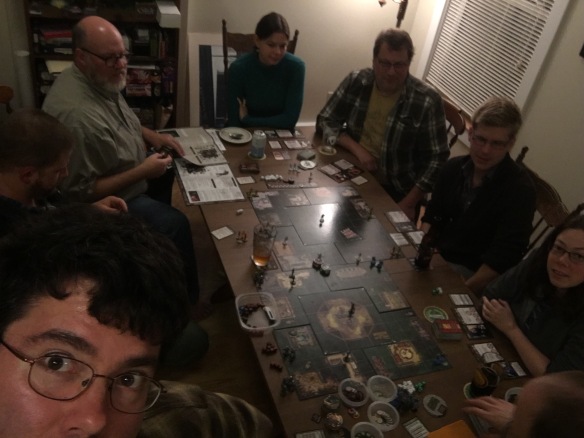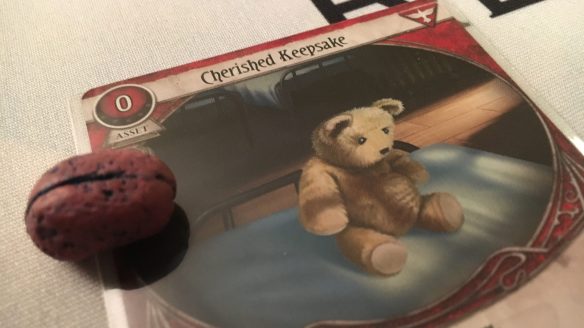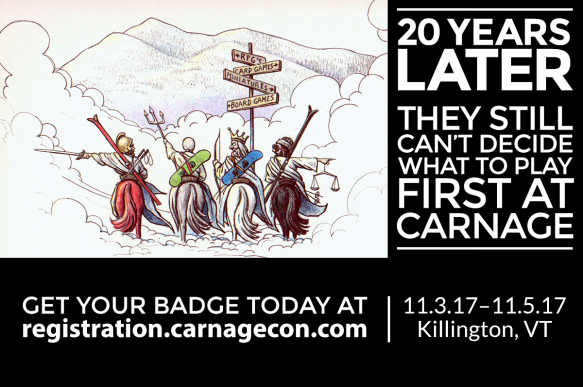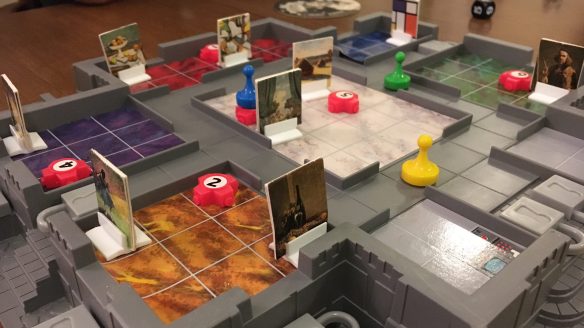
All is quiet in the Boddy Museum. The thief has yet to strike.
Clue: The Great Museum Caper is a game from my nerdly youth that, sadly, I never got to play truly.[1] I admired its place of honor on a shelf for years, and then it probably disappeared in a yard sale some summer day. Recently, after playing Captain Sonar for the first time, I got the urge to finally try this one out after those years, and tracked down a used copy for sale.
The Great Museum Caper is an asymmetrical, one-versus-many game for four people published in 1991. One player takes the role of the thief. Their job is to sneak around the museum unseen, stealing paintings and avoiding being detected by the security systems or the characters. The other three players act as “characters,” or detectives or investigators or what have you,[2] who prowl around the museum trying to figure out where the thief is based on the locations of the paintings being stolen and limited information from the security cameras and motion detectors.
We played this sort of spur of the moment to wrap up after finishing the evening’s main event. I wasn’t as well prepared with the rules as I might normally have been, but we figured things out as we went and everyone seemed to enjoy the game. It’s not nearly as complex as a modern hidden movement game like Captain Sonar, but it plays fast and easily, which makes it a great fit for my game library.
The only drawback to me is the limited player count. Officially, it plays four people, including the thief. In our case, we had five people present, so two buddied up and shared a pawn. I suppose you could stretch player capacity even more by sharing all the pawns, since technically the characters are working together, but I think you’re trending into too many cooks spoiling the broth territory at that point.
To sum up, Clue: The Great Museum Caper is a fun, light game with an eye-catching three dimensional board of molded plastic that works best with four players. It’s a great charity shop find if the pieces are all present. Otherwise, you’re probably looking at $30 plus, total, for a complete used copy from an online seller.
[1] There was at least one failed attempt where I didn’t understand at all how the thief was supposed to move and the parent I had inveigled to feign interest left rules interpretation up to me. But at that age, I could sense something about the game’s balance was off if the thief were to zoom around the board without restriction.
[2] Nominally the characters are those from Clue, Miss Scarlet, et al, but that’s the extent of the connection. Purportedly, according to the BoardGameGeek listing, the game was designed under the name Heist and the Clue theme was added for marketing purposes.




